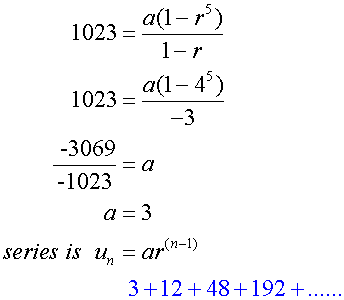Sequences and Series
Refresher
2,3,4,5,6,…, n
is the sequence created by the rule n + 1
un denotes the nth term of the sequence
so here, u1= 2, u2= 3 etc.
Recurrence relations
A sequence can be formed by a recurrence relation.
A first-order linear recurrence relation is of the form
![]()
, where r and d are constants.
A series is a sum formed by the terms of a sequence.
Example
Find the first-order linear recurrence relation
given by the sequence 2, 4, 10, 28
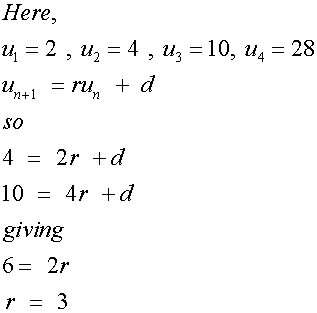
Substituting back ,
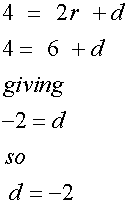
Thus giving the first-order linear recurrence relation
un+1 =3un -2
Fixed Points
If the relation from above is used with a starting value of
u1=1, then the following sequence is generated:-
1,1,1,1,……….1 and so on.
Such repetition is called a fixed point.
u1=0 generates the sequence
-2,-8,-26 etc.
Since u1=0 and u1=2 generate sequences which diverge from 1,
un=1 is an unstable fixed point of the relation
un+1 =3un -2
A stable fixed point occurs when the other sequences converge
to the fixed point.
In general
un+1 = run + d has a fixed point when un+1 = un
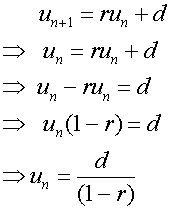
For a stable fixed point
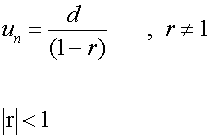
A stable fixed point is often called a limit.
Arithmetic sequences
An arithmetic sequence is of the form
un+3 - un+2 = un+2- un+1 = un+1 - un= d
The common difference, d, is a constant.
The nth term of an arithmetic sequence can be described
![]()
where a = u1, d = common difference and n = nth term
Examples
Find the nth term of the arithmetic sequence
13,16,19…
Solution:
a=13 , d = 16-13 = 3
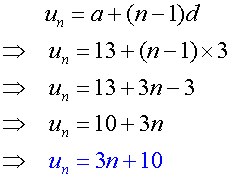
Find the 219th term of the arithmetic sequence
13,16,19…
From above,
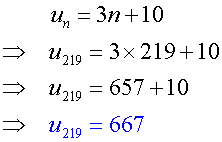
Find the arithmetic sequence which includes
u7 =33 and u18=88
 and
and
so

solving simultaneously gives

substiting
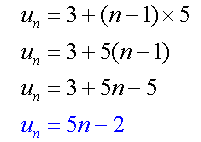
Given the arithmetic sequence
12,22,32,42,52….
find the value of n for which un =162
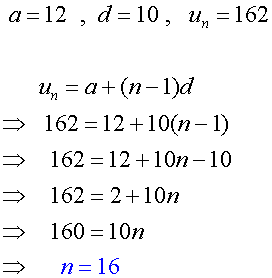
Sum to n terms of an arithmetic sequence

Example
Find the sum of the first 20 terms of the
arithmetic sequence which starts
12,22,32,42,52….
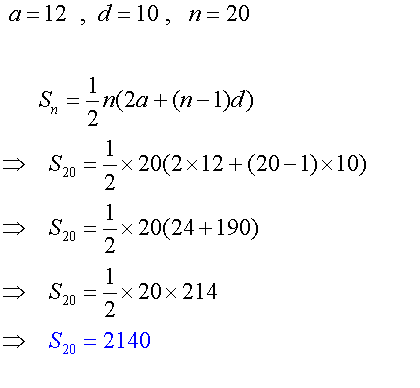
Examples
Find the value of n of the following
arithmetic sequence such that its sum
first exceeds 250.
12,22,32,42,52….
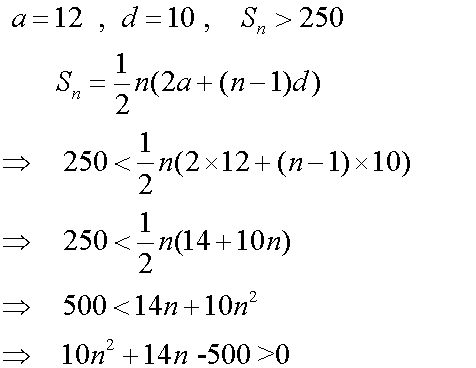
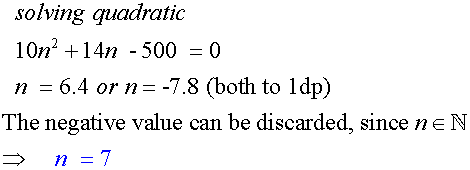
An arithmetic sequence exists such that
the sum of its first 6 terms is 93 and
the sum of its first 9 terms is 207.
Find the sum of its first 4 terms.

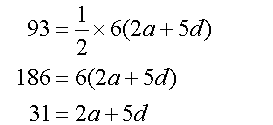
and
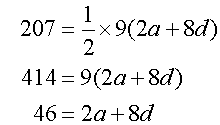
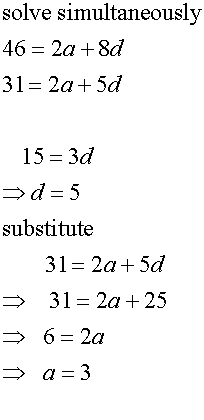
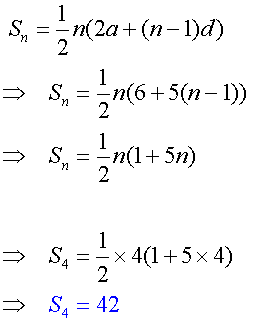
When un is given, the following formula can be used:-

since
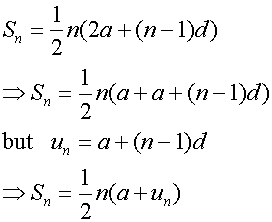
Example
Find the sum of the first six terms of the
arithmetic sequence which starts 3,8,13…
given u6=28
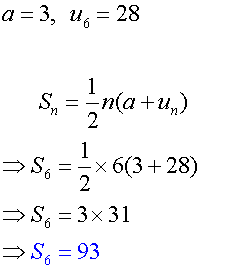
Geometric sequences
A geometric sequence is of the form

The common ratio, r, is a constant.
The nth term of a geometric sequence can be described
![]()
where a = u1, r = common ratio and n = nth term
Example
Find the 12th term of the geometric sequence
5,20,80…
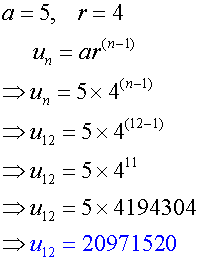
Example
Given the geometric sequence
5,20,80,…..
find the value of n for which un = 327680
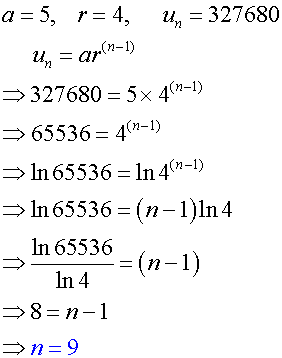
Example
Given u5=1280 and u8=81920 ,
find the geometric sequence.
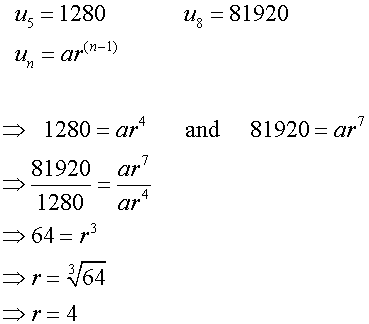
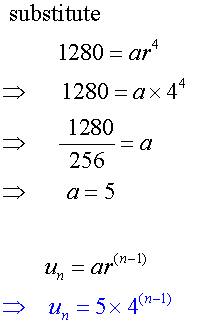
Sum to n terms of a geometric sequence

Example
Find the sum of the first seven terms of the geometric sequence
5,20,80…
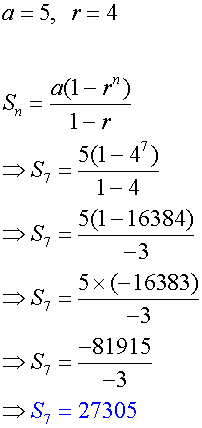
Example
Given S5=1023 and S8=65535 , find the geometric series.

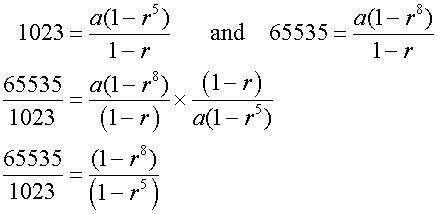

Factorising


Which factorises to
![]()
This has real solutions r = 1 and r = 4
The solution r = 1 is discounted
so
